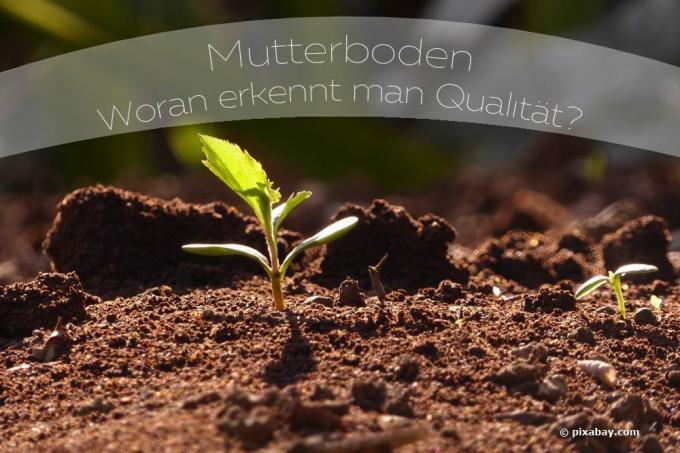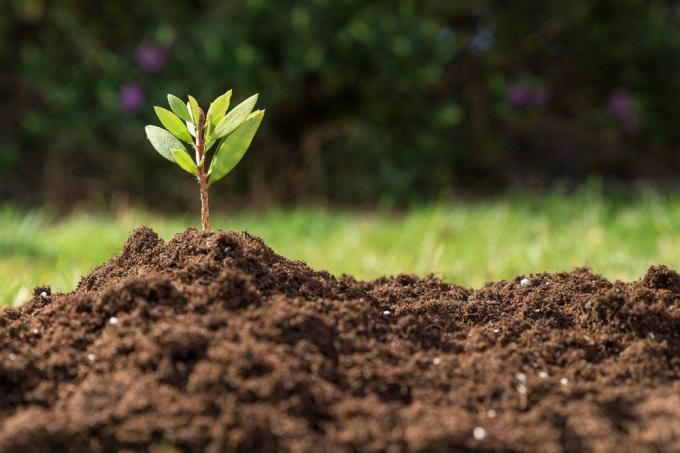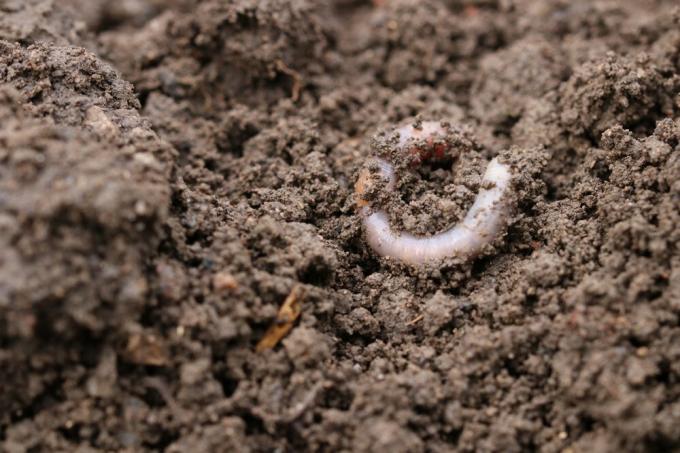
table of contents
- Topsoil - definition
- Quality criteria
- composition
- Drainability
- Nutritional content
- Additions / impurities
- PH value
- Signs of poor topsoil
- Choosing the right seller
Regardless of whether you want to change your own garden or whether you want to turn the fallow construction site back into a living one after building a new house To transform a green oasis, one is again and again on mother earth as a life-giving growth base for shrubs, trees and other cultivated plants reliant. If there is too little of it, this soil, also known as arable tops, must necessarily be purchased. How you can recognize the quality of the soil yourself and avoid disadvantageous properties is shown on the basis of the following characteristics.
Topsoil - definition
Mother earth is the fertile uppermost, 20 to 30 centimeter thick soil layer of naturally grown soil. It contains microorganisms, earthworms and other living things, as well as important nutrients, minerals, trace elements and nitrogen. The topsoil is also of elementary importance for the water supply to the plants. Its strength depends on the depth of penetration of life-giving oxygen and depends heavily on the nature of the soil. In contrast to artificial potting soil, garden soil, ornamental plant soil, etc. topsoil gets its properties through natural humus formation, plant decomposition, etc. and not through targeted such as (mostly) artificial admixture of fertilizers or pesticides. This is exactly why soil protection is particularly important for topsoil.
Quality criteria
How to recognize them
Unfortunately, there is no fixed and generally applicable scale for classifying the quality of topsoil. It would actually be ideal to use the topsoil created there for each location, as it is best adapted to the subsoil below. However, this is only possible to a limited extent, especially in the case of new building measures, as the topsoil is first removed and later re-installed as part of the garden design. If additional soil is needed, however, it usually has to be used foreign places of origin can be used. The following signs help to identify the good quality of the soil:
composition
Optimal
- loose and fine crumbly
- Mixed composition for good drainage and water storage capacity, as well as for unhindered root growth
Identification mark
- The soil is easy to crumble with your fingers
- no resp. hardly any smearing of large chunks of clay
Unfavorable
- very lumpy, compact feel due to the high proportion of sound
- immediate crumbling due to too high a proportion of sand
Drainability
Optimal
- Precipitation water seeps away after the end of precipitation without residual waterlogging
- However, drainage is delayed to allow the soil to absorb moisture
Identification mark
- crumbly consistency
- neither noticeably loamy, nor overly sandy
Unfavorable
- extremely sandy or loamy, compact texture
- leads to rapid drainage or waterlogging that is detrimental to plant growth
Nutritional content
Optimal
- Good basic content of necessary nutrients for a good growth basis for the plants without significant soil improvement measures
Identification mark
- Humus content in the soil can be seen
- heterogeneous nature also indicator for proportions of organic and humic content
Unfavorable
extremely loamy or sandy soils, because then mostly low humus content, very homogeneous soils also mostly with low humus and thus nutrient content
Additions / impurities
Optimal
- Soil without significant admixture of roots, building rubble, other impurities
- because large foreign bodies hinder root growth
- also possible release of pollutants from building rubble and the like
Identification mark
- no foreign bodies visible
Unfavorable
- high proportion of fine rubble due to a considerable increase in the drainage effect and reduction in the water storage capacity
- large foreign bodies due to obstruction of root growth
- Foreign substances due to the release of harmful substances and influencing the pH value (especially construction waste containing gypsum)
PH value
Optimal
- tends to be neutral to slightly acidic
- depending on the planned planting
- Avoid extreme pH values
Identification mark
- not visible to the naked eye
- possibly. Use pH indicator strips
Unfavorable
- too acidic or alkaline soil
- at most for individual plants with the corresponding preference
Signs of poor topsoil
Of course, the valuation of topsoil can also be viewed the other way around before deciding to buy or not to buy. So that the later open-air design does not suffer from the poor quality of the soil, Recognize signs of poor quality and another floor, and possibly another dealer, choose:
- Extremely sandy or loamy consistency, as drainage and water storage capacity are then restricted
- Very homogeneous texture with no noticeable humus content and plant residues
- Numerous foreign bodies recognizable ⇒ Obstruction of the root growth by large-format foreign bodies, in the case of admixtures of unnatural origin also the origin and previous stress are questionable
Choosing the right seller
If one is dependent on buying mother earth, the choice of the seller can also decide on the quality characteristics of the soil obtained. Because not every retailer is very specific about soil protection. Above all, companies that are primarily interested in "getting rid" of the land that is already accumulating as profitably and with little effort as possible, So shell construction and earthworks companies are less likely to be interested in gentle and protective handling of the material than, for example, a Horticulturist. Furthermore, the origin from a construction site can also be an indication that the topsoil is increasingly contaminated with foreign bodies, such as building rubble and other things. If you need soil for garden design, it can make sense to purchase the topsoil from a dealer who knows the matter and may even create and maintain gardens himself. Even if the costs here are likely to be a bit higher, such a seller is likely to have the same demands on his product as you as the end consumer.







